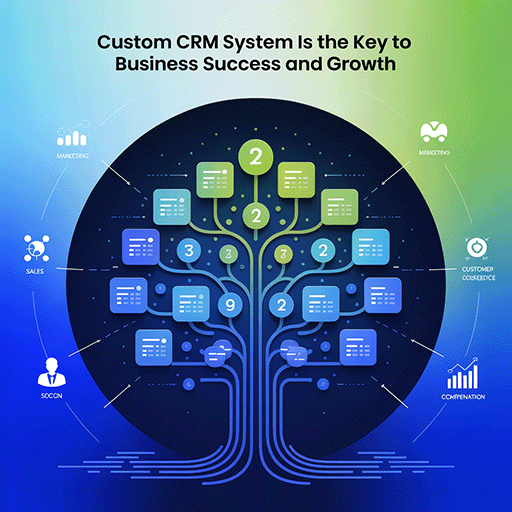Crises loom large in today’s software industry. System failures, data breaches, and operational disruptions threaten companies daily. The tech world’s breakneck pace and intricate systems amplify these risks. Yet many firms remain ill-prepared, unaware of critical blind spots.
Effective crisis management isn’t just helpful—it’s essential for survival. As complexity grows, so does the need for robust response strategies. Ignoring this reality puts organizations at peril. Smart companies recognize the stakes and prioritize crisis readiness. To build resilience, they identify weaknesses and hone their ability to navigate turbulent waters. In this unforgiving landscape, vigilance and adaptability are the keys to enduring success.
Overlooked gaps in crisis management strategies can cripple an organization’s response to adversity. These blind spots hinder operations, tarnish reputations, and slow recovery. Identifying and fixing these weaknesses is crucial for building resilience. A comprehensive crisis management framework addresses potential oversights, thus ensuring swift and effective responses.
Software firms face unique crisis management challenges. Blind spots like tech overreliance and poor communication can impair operations. Addressing these isn’t just risk mitigation—it’s cultivating adaptability.
This blog article examines key vulnerabilities in software company crisis response. We’ll explore how these gaps hinder effective action and outline targeted strategies to overcome them. By spotting pitfalls and implementing solutions, tech organizations can bolster their crisis readiness.
Keep reading to discover how to build a more resilient culture, primed to survive and thrive in unexpected crises and emerge stronger. We’ll provide actionable insights to help software teams enhance their crisis management to ensure they’re prepared for whatever comes their way.
I. Understanding Crisis Management in Software Development
1. Key Statistics on Crisis Management
33%
of organizations have adopted risk management frameworks
$2.66 million
can be saved in data breach costs with a well-defined IRP
50%
faster recovery from disruptions can be achieved through regular BCP testing
45%
of companies have an incident response plan
Understanding the impact and effectiveness of crisis management in software development is crucial for emphasizing its importance and refining your strategy. Here are some key statistics that illustrate the significance of effective IT crisis management and highlight areas for improvement:
- Risk Management Adoption: A recent report shows that 33% of organizations have adopted risk management frameworks to better predict and handle potential crises. This underscores the growing recognition of the need for proactive risk management strategies. However, it’s clear that most of the companies don’t bother with adopting ERM frameworks, and that’s their loss.
- Cost Reduction with Incident Response Plans: A 2022 IBM Security report found that organizations with a well-defined Incident Response Plan (IRP) can reduce the cost of data breaches by $2.66 million. This highlights the financial benefits of having a structured response plan in place.
- Business Continuity Testing: Indeed, organizations that regularly tested their Business Continuity Plans (BCPs) are 50% more likely to recover from various disruptions and reported higher resilience during crises. This emphasizes the importance of regular testing and updates to ensure effective continuity planning.
- Improvement through Post-Incident Analysis: According to a FRSecure survey, only 45% of the companies polled had an incident response plan in place. However, those who did saw an improvement in their crisis management capabilities. By analyzing past events, companies significantly improve their future emergency responses. This data underscores the importance of reflection after crises.
Successful crisis management saves money, boosts resilience, and keeps operations smooth. These numbers show why robust strategies matter for software firms. By implementing smart practices, companies can weather storms, cut costs, and stay productive. Understanding these benefits helps developers build stronger crisis plans.
2. Definition and Importance
When software systems falter, crisis management response springs into action. This strategic approach tackles major disruptions head-on, from system crashes to security breaches. Swift, decisive steps are crucial to minimize damage and restore stability. Effective planning and execution can mean the difference between a minor hiccup and a catastrophic failure.
By prioritizing rapid response and recovery, IT crisis management safeguards software integrity and user trust. In the digital realm, where disruptions loom large, this proactive stance proves indispensable for maintaining operational continuity and system reliability. To understand what causes crisis and learn strategies to thrive during recessions, open up our blog article.
Crises in software development can manifest in various forms:
- System Outages: Unexpected downtimes that prevent users from accessing services. For instance, the 2020 outage of Amazon Web Services (AWS) disrupted numerous businesses globally, highlighting the need for effective crisis management.
- Security Breaches: Unauthorized access to sensitive information. For example, the 2017 Equifax breach compromised the personal data of 147 million individuals, demonstrating the necessity for robust breach response strategies.
- Operational Failures: Problems with software updates or deployments that degrade performance or functionality. A notable example is the 2021 Microsoft update issue that affected business operations and consequently led to the blue screen of death, emphasizing the importance of crisis response preparedness.
Successful crisis management is vital because it:
- Minimizes Downtime: A well-implemented crisis management plan can significantly reduce service interruptions and associated business impact.
- Protects Reputation: Swift and effective responses help maintain customer trust and mitigate damage to the company’s reputation.
- Ensures Compliance: In regulated industries, having a crisis management solution helps ensure adherence to legal and regulatory requirements, such as data protection laws.
To effectively manage crises, software development companies need to implement a comprehensive strategy that includes several critical components. These components are essential for preventing crises from escalating and ensuring a swift, organized recovery.
3. Key Components of Successful Crisis Management
Comprehensive Risk Assessment
Crisis Governance Framework
Scenario-Based Crisis Simulations
Adaptive Decision-Making Processes
Business Continuity Planning
External Stakeholder Engagement
Post-Crisis Review and Continuous Improvement
3.a. Comprehensive Risk Assessment
Start tackling crises head-on by identifying potential threats that could bring your operations to a halt. For software development companies, these threats can be cyberattacks, software failures, supply chain interruptions, or changes in regulatory environments. You can’t just focus on tech risks—you also need to think about operational and reputational ones. Regularly updating your risk profiles and threat models will prepare you for various crisis scenarios.
3.b. Crisis Governance Framework
When things go wrong, you need a plan in place to deal with it quickly and smoothly. That’s where a crisis governance framework comes in. It’s like a blueprint that shows who does what and who’s in charge during an emergency. This team has a clear leader, decision-makers, and a way to communicate with each other. So when a crisis hits, everyone knows what to do, and you can respond quickly and work together. The plan should also include ways to stop minor problems from becoming major ones.
3.c. Scenario-Based Crisis Simulations
Crisis management requires hands-on practice through simulated scenarios. These drills test an organization’s readiness by mimicking real-world crises that push plans and systems to the limit. Run simulations that cover different scenarios like data breaches or system failures. These exercises give valuable feedback on weaknesses in tech and how people respond, helping companies improve their crisis plans. They also familiarize team members with their roles during a crisis, improving overall response times and effectiveness.
3.d. Adaptive Decision-Making Processes
Crises are unpredictable, which means organizations must be ready to adjust on the fly. Effective crisis management is all about having a flexible plan that can rapidly change as the
situation changes. Teams should be able to make decisions quickly based on the evolving nature of the crisis. To do that, they need real-time data and analytics to help guide them. By being able to pivot quickly, teams can avoid getting bogged down in rigid plans that don’t align with the actual crisis.
3.e. Business Continuity Planning
So, you want to keep your business running smoothly during a crisis. Step one: keep essential services and operations going while recovering from the crisis. For software devs, that means keeping client projects on track, safeguarding your IP, and ensuring critical systems are operational. A solid business continuity plan details how you’ll manage resources, lead your team, and get back to full capacity as quickly as possible.
3.f. External Stakeholder Engagement
During a crisis, external stakeholders—such as clients, partners, regulators, and the media—play a pivotal role in shaping the outcome. Proactive engagement with these stakeholders is a key component of crisis management. Companies must maintain open, honest, and consistent communication to manage expectations and protect their reputation. Early engagement helps build trust, mitigating reputational damage and reassuring customers and partners that the company is handling the situation effectively.
3.g. Post-Crisis Review and Continuous Improvement
Crisis management doesn’t stop when the crisis does. In fact, the aftermath is just as crucial. A solid plan should include a post-crisis review to figure out what worked and what didn’t. This means writing down what went right, what went wrong, and what gaps you found. Then, put it all together in a formal report that can help shape future crisis plans, rules, and training. Continuous improvement ensures that organizations are better equipped to handle future crises and turn previous failures into growth opportunities.
In short, effective crisis management comes down to spotting risks, reacting to incidents, planning for ongoing operations, and always looking for ways to improve. By focusing on these critical areas, software development companies can improve their crisis response and recovery, making them more resilient.
II. 5 Common Crisis Management Blind Spots
Effective crisis management demands more than a well-crafted plan; it involves identifying and addressing potential blind spots that can critically impair an organization’s ability to navigate crises. For software development companies, these blind spots can amplify the impact of a crisis and hinder recovery. Below, we delve into twelve common crisis management blind spots, thoroughly exploring their implications and real-world examples.
Blind Spot 1
Overconfidence in Technology
Blind Spot 2
Lack of Cross-Functional Coordination
Blind Spot 3
Ignoring Human Factors
Blind Spot 4
Failure to Update and Test Crisis Plans
Blind Spot 5
Inadequate Communication Channels
Blind Spot 1
Overconfidence in Technology
When companies rely too much on technology, they think automated systems, AI, and other tech will solve all their problems without needing human supervision. But this can be a big mistake. It’s easy to underestimate how often tech can fail, especially in tricky or unexpected situations.
Implications:
- System Failures: Automated systems and AI algorithms can malfunction or produce unintended consequences. For instance, in 2018, Facebook suffered a major outage due to a misconfiguration in its automated systems. An automated network configuration tool incorrectly applied changes that disrupted service for millions of users. This illustrates the limitations of relying solely on technology without adequate manual oversight.
- Complexity and Unpredictability: Technology can struggle with unexpected variables or complex interactions. The 2021 T-Mobile outage, which resulted from a failure in an automated system, showcased how such systems can fail under stress. This outage, which lasted several hours, affected millions of customers and highlighted the limitations of technology in managing crisis scenarios without human intervention.
- Statistics: A 2022 survey found that 87% of IT leaders are confident in their company’s security resilience. This highlights the problem of overconfidence in technology that may lead to overlooking or missing critical issues it possesses.
Examples:
Cloudflare Outage (2022): Cloudflare experienced a widespread outage due to a configuration error in its automated deployment system. The failure demonstrated how technology, when not adequately managed or monitored, can lead to significant service disruptions affecting a broad range of clients.
Blind Spot 2
Inadequate Communication Channels
When a crisis hits, good communication is key. You need strong channels in place for your team to work together and talk to people outside your organization. If communication breaks down, things can get messy fast. You’ll get misinformation, confusion, and delays—all of which make the crisis worse and harder to fix.
Implications:
- Management Team Gaps: Poor internal communication can create confusion about roles and responsibilities. During the 2021 Microsoft Exchange Server vulnerabilities, inadequate internal communication led to delays in deploying critical security patches. The lack of clear and timely updates from IT and security teams hindered the organization’s ability to promptly address the vulnerabilities.
- External Miscommunication: Ineffective external communication can damage an organization’s reputation and erode customer trust. The 2018 Facebook data breach saw significant user backlash due to inconsistent and unclear public messaging. The company’s failure to provide transparent and timely updates contributed to a loss of user confidence and increased scrutiny from regulators.
- Statistics: A recent report by Vorecol found that 68% of organizations experienced significant communication failures during crises, emphasizing the need for comprehensive and effective communication strategies
Examples:
- Equifax Data Breach (2017): The Equifax data breach was exacerbated by poor communication. The company’s delayed and confusing public statements led to widespread criticism and legal challenges. The lack of clear communication contributed to the erosion of trust among affected consumers and stakeholders.
- Volkswagen Emissions Scandal (2015): Volkswagen faced significant backlash due to its delayed and evasive communication regarding the emissions scandal. The company’s initial lack of transparency and failure to provide clear information about the extent of the issue damaged its reputation and led to severe regulatory and financial consequences.
Blind Spot 3
Lack of Cross-Functional Coordination
Crises often require coordinated efforts across multiple departments and teams. A lack of cross-functional coordination can result in fragmented responses, inefficiencies, and delays in addressing the crisis effectively.
Implications:
- Fragmented Responses: When teams work in isolation, their response to a crisis can fall apart and be less effective. The 2020 SolarWinds cyberattack showed us what happens when IT, security, and incident response teams don’t communicate well—it delays identifying and stopping a breach. This fragmented response made it tough for the organization to contain the damage and deal with its far-reaching effects.
- Increased Complexity: Complex crises involving various aspects, such as IT disruptions and security breaches, require seamless coordination. The 2018 TSB Bank IT migration crisis highlighted how a lack of synchronization between IT and customer service teams led to operational disruptions and negatively impacted customer experience.
- Statistics: Notably, 86% of organizations that faced major crises struggled with inter-departmental coordination, indicating a significant area for improvement in crisis management.
Examples:
- Target Data Breach (2013): Target’s data breach was worsened by inadequate cross-functional coordination. The company’s IT and security teams failed to effectively collaborate on responding to the breach, leading to a delayed and fragmented response that exacerbated the breach’s impact.
- Sony PlayStation Network Outage (2011): The PlayStation Network outage, caused by a cyberattack, was exacerbated by a lack of cross-functional coordination. The failure of IT, security, and customer service teams to work together effectively led to prolonged downtime and increased customer dissatisfaction.
Blind Spot 4
Ignoring Human Factors
Human factors, including psychological and emotional aspects, play a critical role in effective crisis management. Ignoring these factors can lead to impaired decision-making, decreased performance, and prolonged recovery times.
Implications:
- Leadership Impact: The stress and pressure of a crisis can impact leadership decision-making. The 2019 Boeing 737 Max turmoil, caused by the death of 346 passengers due to the crash, highlighted how leadership decisions under pressure can affect the effectiveness of crisis management. Decision-making errors and delays in addressing safety concerns led to prolonged regulatory scrutiny and reputational damage.
- Employee Well-Being: Neglecting the psychological impact on employees can result in burnout and decreased productivity. Indeed, employees experienced heightened stress during crises, affecting their performance and overall well-being.
- Statistics: Crisis dramatically affects employees’ mental health and well-being. As statistics showcase, those facing these challenges are 4× more likely than others to want to leave their organizations. Thus, organizations should account for the psychological impact of crises on employees, resulting in less effective crisis management and slower recovery.
Examples:
- Yahoo Data Breach (2013-2014): Yahoo’s handling of the data breach was affected by poor consideration of employee well-being and crisis management fatigue. The company’s failure to adequately address the psychological impact on employees and manage the crisis effectively led to delays in response and recovery.
- BP Deepwater Horizon Oil Spill (2010): BP’s inadequate attention to the human factors affecting crisis management exacerbated the Deepwater Horizon oil spill. Leadership decisions under stress and insufficient support for employees involved in the response contributed to the crisis’s prolonged duration and extensive damage.
Blind Spot 5
Failure to Update and Test Crisis Plans
Crisis management plans that are outdated or untested can be ineffective when an actual crisis occurs. This blind spot involves neglecting to regularly review, update, and practice crisis management procedures.
Implications:
- Ineffective Response: Outdated plans may not address current threats or operational changes, leading to ineffective responses. The 2022 Log4j vulnerability crisis exposed how many organizations with outdated security protocols struggle to address the issue effectively, revealing the limitations of relying on untested plans.
- Extended Recovery Times: Failure to test and update crisis plans can result in prolonged recovery times and increased damage. Research from the Harvard Business Review shows that having a crisis management plan sets companies up for success—they’re 3.5 times more likely to bounce back fast from a crisis.
Examples:
- Kodak’s Response to Digital Disruption: Kodak’s inability to adapt its crisis management plans to address the digital disruption in the photography industry led to its eventual downfall. The company’s outdated plans and lack of adaptation to emerging technologies contributed to its failure to navigate the crisis effectively.
- HealthCare.gov Launch (2013): The problematic launch of HealthCare.gov was partly due to outdated and untested crisis management plans. The website faced significant technical issues on launch day, which could have been mitigated with more rigorous pre-launch testing and updated contingency plans.
By recognizing and addressing these common crisis management blind spots, software development companies can better prepare for and manage crises, enhancing their overall resilience and effectiveness in navigating unexpected challenges. Identifying these issues is crucial for building a robust crisis management framework capable of handling diverse and evolving threats.
III. The Impact of Crisis Management Blind Spots on Organizational Resilience
Blind spots in IT crisis management can undermine an organization’s resilience, impacting its ability to handle disruptions effectively. For software development companies, these blind spots often lead to operational failures, reputational damage, and extended recovery times. This section explores the consequences of five key crisis management blind spots and illustrates their impact on organizational resilience through real-world examples.
1. Overconfidence in Technology
Consequences:
- Operational Failures: When organizations place excessive trust in automated systems and technology, they may face significant operational disruptions when these systems fail. Technology, while powerful, is not infallible and can lead to service outages or critical failures without adequate human oversight.
- Prolonged Recovery: Overreliance on technology can delay problem detection and resolution. Without effective manual intervention, recovery from a technology failure can be sluggish, exacerbating the crisis’s impact.
2. Inadequate Communication Channels
Consequences:
- Operational Confusion: Poor communication channels during a crisis can result in confusion among internal teams, delaying the response and exacerbating the crisis. Ineffective communication can lead to a lack of clarity about roles and responsibilities, causing inefficiencies in crisis response management.
- Reputational Damage: Inadequate external communication can severely harm an organization’s reputation. Misinformation or delays in updating stakeholders can erode public trust and customer confidence, causing long-term negative effects on the brand.
3. Lack of Cross-Functional Coordination
Consequences:
- Fragmented Responses: Ineffective coordination among departments can result in a fragmented response to crises. This lack of synergy can lead to overlapping efforts or neglected aspects of the crisis, impairing the overall effectiveness of the response.
- Operational Inefficiencies: Disjointed responses can create operational inefficiencies, impacting the organization’s ability to manage the crisis effectively. Delays and miscommunications between teams can extend the duration and severity of the crisis.
4. Ignoring Human Factors
Consequences:
- Compromised Decision-Making: Ignoring the psychological and emotional aspects of crisis management can impair decision-making. Stress and burnout can negatively affect leaders and employees, leading to poor decisions and prolonged recovery times.
- Reduced Employee Performance: Failure to support employee well-being during a crisis can result in decreased performance and higher turnover. Employees under stress may struggle to contribute effectively, affecting the organization’s ability to manage and recover from crises.
5. Failure to Update and Test Crisis Plans
Consequences:
- Ineffective Responses: Outdated or untested crisis plans can lead to ineffective responses when a crisis occurs. Plans that do not reflect current threats or operational realities may fail to address the situation appropriately, leading to extended recovery times.
- Extended Downtime: Organizations with outdated plans may experience longer recovery periods and greater damage. The inability to adapt crisis management plans to current conditions can delay response efforts and amplify the crisis’s impact.
IV. Illustrative Crisis Management Case Studies in a Table
| Blind Spot | Illustrative Case | Company |
|---|---|---|
| Overconfidence in Technology | A data breach occurs at TechSecure Solutions due to over-reliance on automated security tools without human oversight. | TechSecure Solutions |
| Inadequate Communication | During a system outage, the lack of clear communication channels at CodeWave Inc. leads to confusion and delays in resolving the issue. | CodeWave Inc. |
| Lack of Cross-Functional Coordination | Teams at DevInnovate (development, IT, and support) fail to collaborate during a product failure, prolonging downtime. | DevInnovate |
| Ignoring Human Factors | Employees at SoftMinds Corp. experience burnout during a prolonged crisis, reducing productivity and slowing recovery efforts. | SoftMinds Corp. |
| Outdated Crisis Plans | NextGen Software struggles with a ransomware attack because its outdated crisis plan lacks updated protocols, causing a chaotic response. | NextGen Software |
By recognizing and addressing these crisis management blind spots, software development companies can strengthen their resilience. Improving crisis management practices and strategies is essential for effectively navigating crises and ensuring a swift and successful recovery. Understanding the impact of these blind spots helps organizations better prepare for and respond to challenges, ultimately enhancing their overall resilience and ability to thrive.
V. What Should Be Done When Responding to a Crisis?
Crisis management blind spots can make a company vulnerable. Fixing these gaps is crucial to build resilience and bounce back from disruptions. For software development firms, having solid strategies in place to tackle these blind spots can significantly boost their crisis management skills. This section outlines practical tactics to address each blind spot, offering hands-on advice and tips to build a more robust crisis management framework.
Strategy 1
Addressing Overconfidence in Technology
1. Implement Regular Monitoring and Maintenance
- Action: Establish routine checks and maintenance procedures for all automated systems and technology infrastructure. Regularly review system performance and reliability to identify and address potential issues before they escalate into crises.
- Benefit: This proactive approach ensures that technological systems are functioning correctly and reduces the risk of unexpected failures.
2. Integrate Human Oversight
- Action: Complement automated systems with human oversight. Designate personnel to monitor automated processes, verify system outputs, and intervene when anomalies are detected.
- Benefit: Human oversight helps catch errors that automated systems may overlook and ensures a more comprehensive response to system failures.
3. Develop Contingency Plans
- Action: Create contingency plans that outline alternative procedures and manual intervention steps in case of technology failures. Test these plans regularly to ensure they are effective and up-to-date.
- Benefit: Contingency plans provide a clear path for recovery when automated systems fail, minimizing operational disruptions.
Strategy 2
Improving Communication Channels
1. Establish Clear Communication Protocols
- Action: Develop and document communication protocols that define how information will be shared internally and externally during a crisis. Include guidelines for frequency, channels, and content of communications.
- Benefit: Clear protocols ensure consistent and timely communication, reducing confusion and improving coordination during crises.
2. Implement Crisis Communication Training
- Action: Conduct regular training for employees on crisis communication practices. Include scenario-based exercises to help staff practice delivering clear, accurate, and timely information.
- Benefit: Training prepares employees to handle communication effectively during crises, enhancing the organization’s ability to manage public perception and internal coordination.
3. Utilize Communication Tools and Technologies
- Action: Invest in and utilize advanced communication tools and technologies that facilitate real-time updates, collaboration, and information sharing. Tools such as secure messaging apps and incident management platforms can streamline communication.
- Benefit: Advanced tools improve communication efficiency and effectiveness, ensuring that all stakeholders are informed and aligned during a crisis.
Strategy 3
Enhancing Cross-Functional Coordination
1. Establish a Crisis Management Team
- Action: Form a dedicated crisis management team composed of representatives from key departments, including IT, security, communications, and operations. Define roles and responsibilities for each team member.
- Benefit: A coordinated team approach ensures that all aspects of the crisis are addressed and responses are unified and efficient.
2. Conduct Cross-Departmental Drills
- Action: Regularly conduct cross-departmental drills and simulations to test coordination and communication between different teams. Use these exercises to identify and address coordination gaps.
- Benefit: Drills enhance team collaboration and readiness, ensuring that departments work together effectively during an actual crisis.
3. Develop and Share Crisis Response Plans
- Action: Create comprehensive crisis response plans that outline procedures and protocols for various scenarios. Ensure that these plans are shared and understood across departments.
- Benefit: Shared plans provide a common framework for response, improving coordination and reducing the likelihood of fragmented efforts.
Strategy 4
Addressing Human Factors
1. Implement Support Systems for Employees
- Action: Establish support systems to help employees manage stress and maintain well-being during crises. This may include counseling services, stress management programs, and regular check-ins.
- Benefit: Supporting employees helps mitigate the psychological impact of crises, ensuring that they can perform effectively and make sound decisions.
2. Foster a Resilient Organizational Culture
- Action: Promote a culture of resilience and adaptability within the organization. Encourage open communication, provide training on stress management, and recognize employees’ efforts during crises.
- Benefit: A resilient culture enhances employees’ ability to cope with crises and contributes to a more effective crisis response.
3. Provide Leadership Training
- Action: Offer leadership training focused on crisis management, including decision-making under stress and managing team dynamics during high-pressure situations.
- Benefit: Trained leaders are better equipped to handle the complexities of crisis management, improving overall response effectiveness.
Strategy 5
Updating and Testing Crisis Plans
1. Regularly Review and Update Plans
- Action: Implement a process for regularly reviewing and updating crisis management plans to reflect changes in technology, operations, and emerging threats. Schedule periodic reviews and revisions.
- Benefit: Updated plans ensure that crisis management strategies are relevant and effective in addressing current risks and operational realities.
2. Conduct Simulations and Exercises
- Action: Perform regular crisis simulations and tabletop exercises to test the effectiveness of crisis management plans. Include a variety of scenarios to evaluate different aspects of the response.
- Benefit: Simulations help identify weaknesses in plans and provide opportunities for improvement, ensuring that the organization is well-prepared for real crises.
3. Engage External Experts
- Action: Consult with external experts, such as crisis response management consultants and industry specialists, to review and refine crisis plans. Incorporate their insights and recommendations into the organization’s strategies.
- Benefit: External expertise objectively assesses crisis plans and can offer valuable recommendations for enhancing preparedness and response capabilities.
Implementing these strategies will help software development companies address weaknesses in their crisis management, build resilience, and improve their crisis response. It’s crucial for companies to stay proactive and continually refine their crisis management practices to stay on solid ground in a rapidly changing environment.
Wrapping Up
Effectively managing crises is critical for software development companies, where blind spots in crisis management can jeopardize organizational resilience. Key blind spots include overconfidence in technology, inadequate communication, lack of cross-functional coordination, ignoring human factors, and outdated crisis plans. Addressing these issues requires proactive strategies:
- Enhance Technology Oversight: Implement regular monitoring and human checks to complement automated systems.
- Improve Communication: Establish clear protocols and invest in advanced tools to ensure timely and accurate information sharing.
- Foster Coordination: Form a dedicated crisis management team and conduct cross-departmental drills to ensure cohesive responses.
- Support Employees: Provide support systems and training to manage stress and maintain performance during crises.
- Update Plans: Regularly review and test crisis management plans to keep them relevant and effective.
By addressing these blind spots and adopting these strategies, software development companies can strengthen their crisis management capabilities, safeguard their reputation, and enhance their ability to recover swiftly from disruptions.








